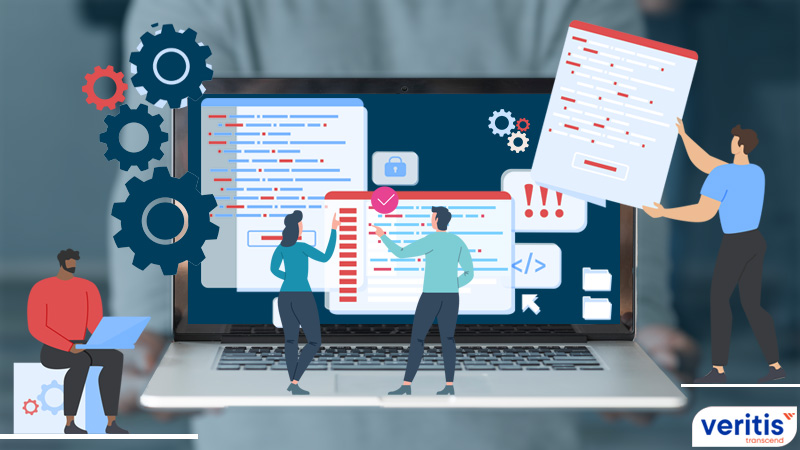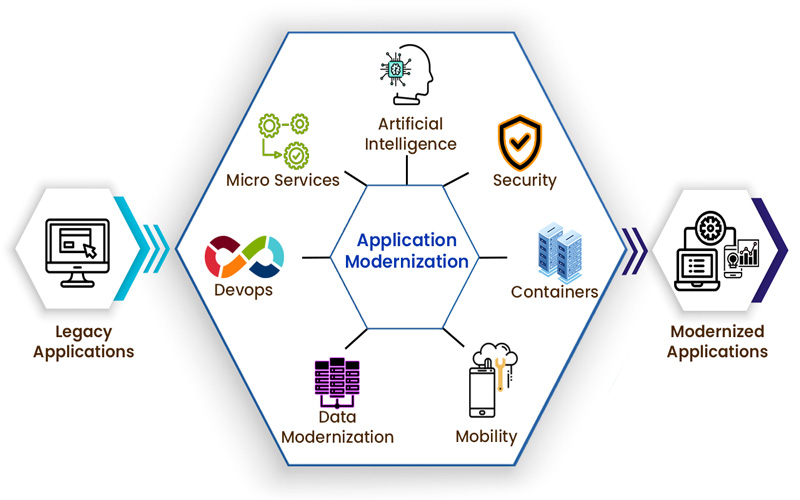
With changing times, legacy systems are becoming increasingly irrelevant and hard to maintain. As many organizations still utilize systems built on outdated software languages and irrelevant hardware parts, cybersecurity risk has increased with efficiency taking a real hit.
Though application modernization is a time-taking procedure and comes without its challenges, the benefits of undertaking this venture are numerous, and here are the five best practices to follow:
Developing an Application Modernization Strategy
1) Listing out the crucial applications
Organizations must first list their high-value assets and analyze how they could benefit from better scalability, security, and performance. They must list the usability, problem areas it addressed, and the maintenance costs it incurs and understands how modernization would prove beneficial.
Once these points are identified, organizations must boil down to application specifics like who needs to leverage it, its capabilities and limitations in terms of performance, and function. Though hard data helps develop these insights, it is imperative to get the inputs of those dealing with the application or who are using it somehow.
Through this information, leaders can make crucial decisions about the investment in specific applications and then setting goals and priorities to initiate modernization for the best results.
2) Analyze the resources
Since application modernization is a technical and organizational change, it is important to devise successful strategies for ensuring both occur.
For starting the organizational transformation journey, organizations must identify leaders who hold a grasp on the application environment and measure the overall impact of changes at different levels of organization, processes, and technology. This signifies developing a firm understanding of the application, how it is connected to various sources (other applications or networks), and its maintenance procedures.
An account of the team’s skillsets must be taken to understand the modern application development methods and how IT could support the mission.
3) Devise an approach
Numerous approaches must be considered, ranging from adding new features to the current architecture and understanding how it aligns with the end user’s needs. Through containers, microservices, and the cloud, it has become easy today to develop and manage applications.
Application modernization and cloud migration help technical challenges by enabling applications to scale up elastically.
4) Measuring improvements in performance
After completing the initial modernization phase, it is essential to monitor infrastructure and applications up to the code level to ensure quality application performance. The infrastructure must be examined for issues and errors with cloud, database, network, and code to understand how they impact end-user performance or business continuity.
Organizations need to measure application performance post-modernization to understand the outcome in terms of how the application functionality has changed and ensured optimization.
5) Process change
Once all the factors have been weighed in, organizations still fail to modernize their legacy systems due to cost overruns, project failures, and delays. Modernizing application infrastructure requires careful planning, adopting quality practices, and developing code with those who understand the bigger picture.
Conclusion

At Veritis, we help you devise a data-driven approach to develop an application modernization strategy that meets your business requirements and offers a quality client experience. We are a US-based IT services provider who delivers high value and cost-effective solutions to clients, including Fortune 500 firms, for nearly a decade.

